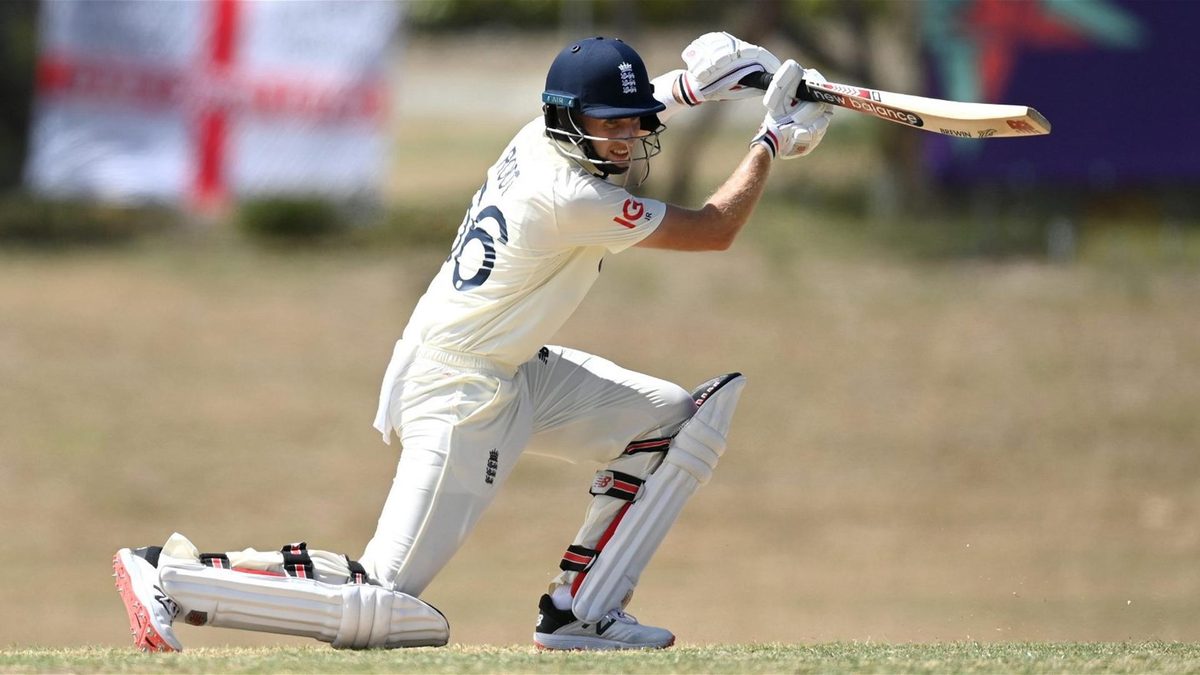
Joe Root is set to bat at No.3 in England’s first Test against West Indies, continuing a long-running saga over his best position
“Have we tried hair down, glasses on? How about Root at three, Bairstow without the gloves?”
The topic of where Joe Root bats has taken on a great significance over the years, with the exact location of their best player sometimes seeming more important than the failings of the rest. And while the churn of 2021 – six hundreds, 1,708 runs, only two more prolific calendar years in history, and all at No.4 – could have put the argument to bed, we’re set for one last go round. This time however, there’s a difference. This is Root’s decision.
It has always made sense in theory. Put your best, most technically sound player in your most troublesome spot, where so many of the all-timers have founded a great batting line-up. He can see off the tough stuff and then expand later on, and the rest can bat around him.
In practice it’s been a different tale. Root averages a mere 38.66 at No.3 (better than everyone else but still not great) compared to a world class 51.27 at No.4. Why weaken a strength when it doesn’t even strengthen the weakness all that much? It’s a compelling argument, until you realise that, with Root batting at four, England already have him outside his best position. It’s at No.5 where Root averages a gargantuan 67.77, making most use of his two best skills: demolishing spin, and grinding out huge scores when the bat is on top. Compromise has already been reached. What’s one place higher?
And really, what is one place higher? It’s not as if Root has been launching off of consistent cushy platforms at second drop. He has batted there 106 times, and never once come in with more than 160 on the board. Is 10-1 really so different from 20-2? Root’s record would suggest it is, but there is so much that goes into this – the conditions and bowlers he’s faced when batting at No.3, his own form at the time and plenty else besides. Are we really to believe that Root is incapable of averaging 50 at No.3?
But even this, really, is to miss the point. Part of the reason why Root’s record at No.3 is worse than at No.4 is because it’s harder to bat at No.3 than at No.4, which is why it might make sense to put him there. The answer to whether moving Root up a slot has been a success won’t be found in his own batting numbers, but in the returns of those around him. If your No.3 averages 45 and your No.4 35, that’s better than your No.3 averaging 25 and your No.4 50. Which is not to say the former is what will happen, but to point out that a drop in Root’s average doesn’t necessarily mean he’s been a failure.
In isolation, Root is England’s best option at No.3. Since his debut, only two players average more than him for England there – Gary Ballance (ineligible) and Jonathan Trott (retired). In that time, he also has England’s best record as an opener, ahead of Alastair Cook, and at No.4 and No.5 (with a minimum of 10 innings in each possession). Really, England’s Test struggles can be traced back to Tom Harrison failing to plough that pesky bonus into the Joe Root cloning program.
It could be that Root carries his form at No.4 into No.3, smoothing the progress of Dan Lawrence, Jonny Bairstow and the rest as he goes and everything’s rosy. Or his form might fall off a cliff, and we’ll be back where we started, only now with Root desperate for runs rather than plundering them. But most likely we’ll see a small drop-off in returns, and it will be up to everyone to figure out if that’s worth it with an uptick elsewhere.
Perhaps the most pertinent point is that, if 2021 showed anything, it’s that Root can average 60 and England can still be rubbish. Given that, it’s hard to believe a shift to No.3 is going to suddenly solve all of England’s problems, but it also can’t make things much worse than they already are. And at least this way, there’s something to talk about.








